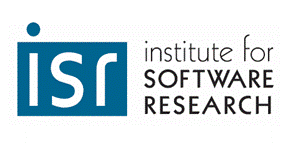
Institute for Software Research
School of Computer Science, Carnegie Mellon University
Case Study Report:
Architecture Evolution at Costco
Jeffrey M. Barnes
December 2013
Many software systems eventually undergo changes to their basic architectural structure. As systems age, they often require redesign in order to accommodate new requirements, support new technologies, or respond to changing market conditions. At present, however, software architects lack tools to assist them in developing plans for carrying out such evolution.
In previous research, we have developed an approach to support architects in reasoning about evolution. Our approach is based on formally modeling and reasoning about possible evolution paths—sequences of transitional architectures leading from the current state to some desired target architecture.
To date, much of this work has been theoretical in character. We have focused our efforts on the definition and elaboration of a theoretical framework for architecture evolution, and have done relatively little work on applying this theoretical research in practical contexts.
This report presents a case study examining architecture evolution in depth in a real-world software organization: the IT division of a major global retailer. Based on content analysis of interview data and architectural documentation, the case study examines how practicing architects plan and reason about evolution, what challenges they face in doing so, and whether our modeling approach is adequate for capturing the concerns that arise in a real-world evolution. It finds that architects face a variety of pressing challenges in planning evolutions of major software systems, and use a variety of techniques to manage these challenges. It further finds that most of the major considerations that architects described in connection within a specific evolution can be successfully modeled using our approach, suggesting that the conceptual framework and specification languages that we have developed are expressive enough to be applicable to a real-world architecture evolution.
104 pages
Return to:
SCS Technical Report Collection This page maintained by reports@cs.cmu.edu
School of Computer Science